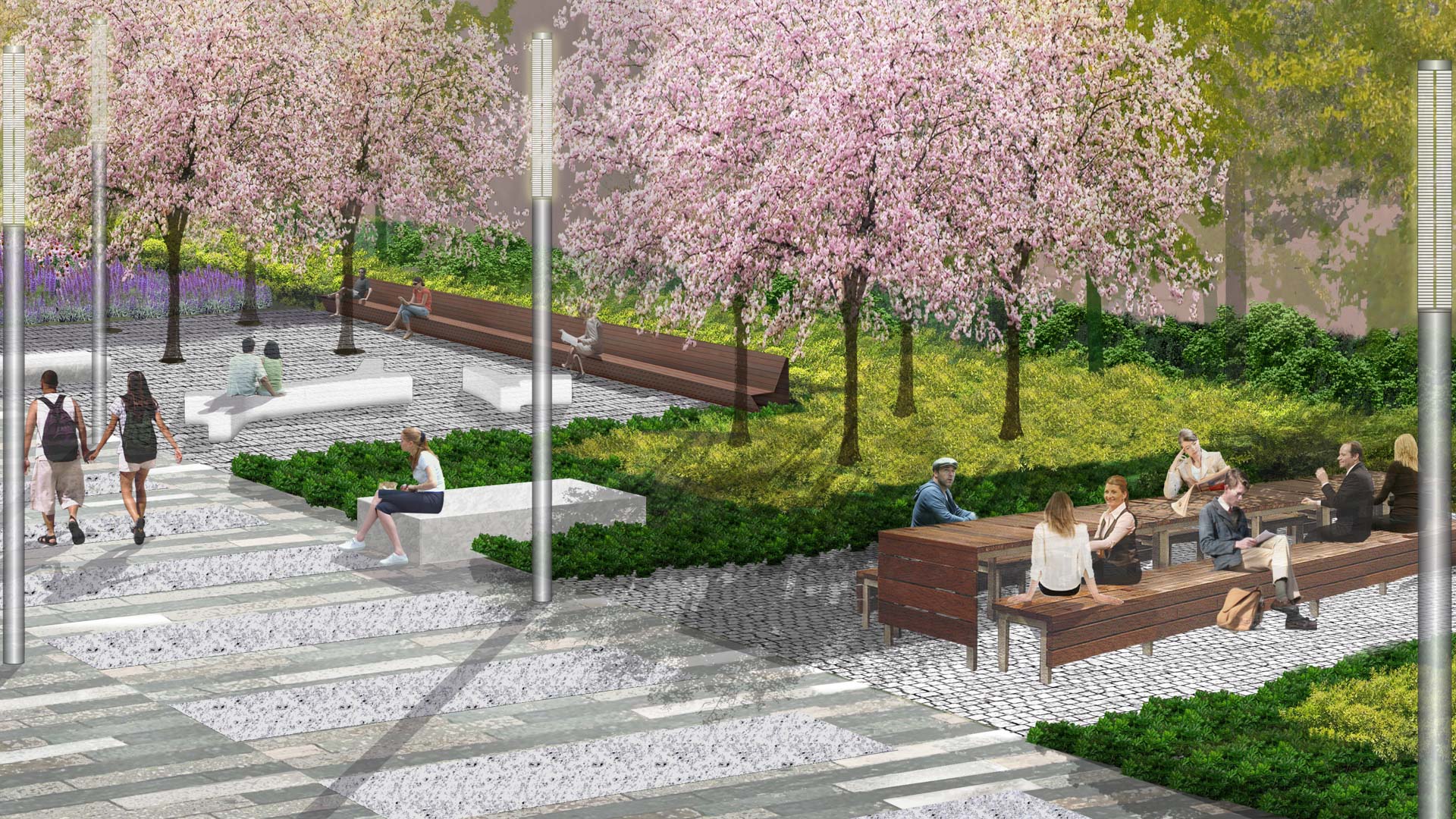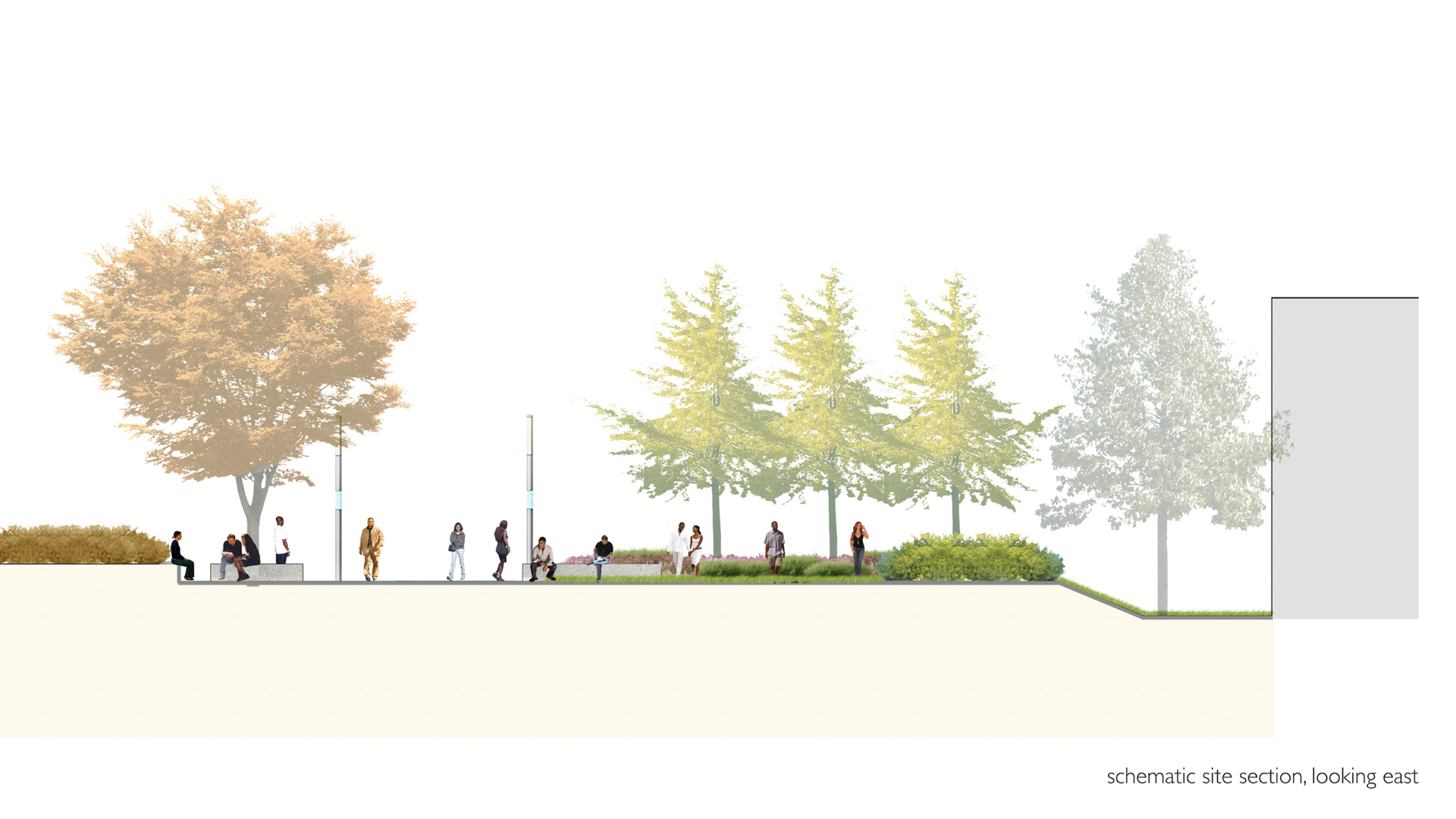DETAILS
Since its founding in the 1960s, Medgar Evers College has been a central figure and source of pride for Brooklyn’s Bedford Stuyvesant community. Its reinvigoration, spurred by a rapidly expanding student body, began ten years ago with a campus master plan, prepared by Ennead Architects and Thomas Balsley Associates. In addition to new facilities, the plan foresaw a shortage of outdoor public spaces normally associated with a robust academic setting and proposed closing the street that had divided the campus. Ten years later, a capitol program provided the means by which a new central quad and promenade would replace the street and parking. With this bold urban intervention and an intense greening program, this new vision for the school’s outdoor public spaces will enhance campus life for students, faculty, and visitors.
Together with its promenade, this new quad provides a unifying pedestrian connection between Bedford and Franklin Avenues and between existing and new campus buildings, finally providing the campus with a cohesive identity and sense of place. With the dramatic transformation of a street to more campus green space comes the opportunity to integrate a series of sustainability strategies into the campus environment. The carbon footprint of the campus is reduced through the implementation of porous paving, native plantings and gabion walls in bioswales, and low voltage LED lighting.
The promenade serves as an academic “hallway” and is bordered with a diverse array of seating opportunities and a series of “garden rooms” which serve as outdoor classrooms, living rooms, study spaces, and planted gardens. At mid-point, the promenade swells into a large lawn area, a much needed center to the campus for informal academic lounging and large gatherings such as performances, festivals, and the annual graduation ceremony. To unify the hallway’s variety of spaces, a series of landscape and architectural elements is deployed, including a distinct and modulated paving pattern, plinths for seating, and light pylons with interpretive graphics that form the school’s “walk of fame.”
awards:
Tarrant County College
To meet the growing needs of the downtown and North Main communities in Fort Worth, Texas, SWA provided the master plan and landscape design for a new college campus to add to the Tarrant County College District. Designed to be constructed in a series of phases, the project aims to provide a stimulating and rewarding environment for students and the local comm...
Leeum Samsung Museum of Art
From its mountainside perch overlooking Seoul, the Samsung Museum of Art Complex boasts museums by three of the world’s most sought-after architects: Rem Koolhaas, Jean Nouvel and Mario Botta. Uniting these remarkable yet divergent works of architecture is a space of clean and powerful gestures. This elegant, understated landscape serves as their matrix and mu...
Samsung Electronics Training Center
Evolving trends in technology and the need to build a new, state-of-the-art Electronics Training Center allowed Samsung to commission the collaborative team of Samoo Architects and Thomas Balsley Associates for the design of their new facility in Keyonggi-Do Province in Korea. Essential to both Samsung and the design team was a site design solution that would ...
Tokyo University of Foreign Studies Campus
Tokyo University of Foreign Studies Campus Fuchu, Japan. Landscape International, Ltd. Kume Sekkei, Architects. NBBJ Architecture. SWA provided master planning and landscape architecture for the Foreign Studies Campus of Tokyo University on the site of a former military base on the outskirts of Tokyo. This campus serves Japanese and foreign students pursuing a...







